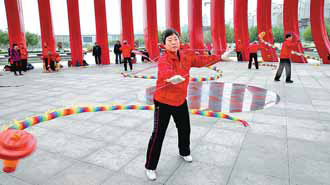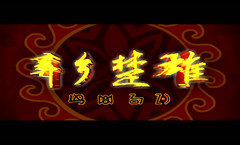Chinese yo-yo combines art, culture and exercise
By Sun Ye ( China Daily )
Updated: 2013-11-14
Kongzhu, also known as the Chinese yo-yo, works as a diabolo spinning and buzzing like an acrobat on a string.
It's an art that dates back more than 1,000 years. It has passed down from the hands of lords and dignitaries to become a household pastime.
It was the "clap-less bells" during the Ming Dynasty (1368-1644), and "vibrating bells" in southern China.
It's made of the country's signature plant - bamboo.
Kongzhu is versatile and has more than 1,000 sets of movements. The number is still growing. These are enough to make it a national intangible heritage.
"The most beautiful playing of kongzhu that will forever remain with me is 'five blossoming flowers'," says Zhuge Xiangwu, head of an amateur kongzhu performance troupe in Wuqing, Tianjin.
"The flowers" are Chinese yo-yos. Five of them, each with a different color, are handled by just one performer and revolve at the same time. It's a set of movements designed for the celebration of the 2008 Olympic Games.
Zhuge's troupe goes to Beijing's Longtan Park fair every year to celebrate the Chinese Lunar New Year, as juggling and playing kongzhu has been a popular program at the country's new year fairs since the Qing dynasty (1644-1911).
"Kongzhu is fun and it can drive your worries away," Zhuge says.
Another perk of practicing Chinese yo-yo is evident. It's a comprehensive exercise that moves one's various muscles and trains one's alertness. "You have to use your muscle power in the right way, react quickly to the spinning diabolo and try your best to go with it," he says.
Most performers in his troupe are 60 or older. Today, kongzhu groups are composed mainly of retired citizens, including Zhuge's group. Zhuge and his fellows perform and practice each day for four to five hours at Wuqing's Culture Park.
For Zhuge, their recruiting strategy is simple, "We welcome anyone who's interested. After all, it's not hard to pick up the art."
|
An enthusiast practices kongzhu in Central Park, Wuqing in Tianjin. Photos by Jiang Dong / China Daily |


